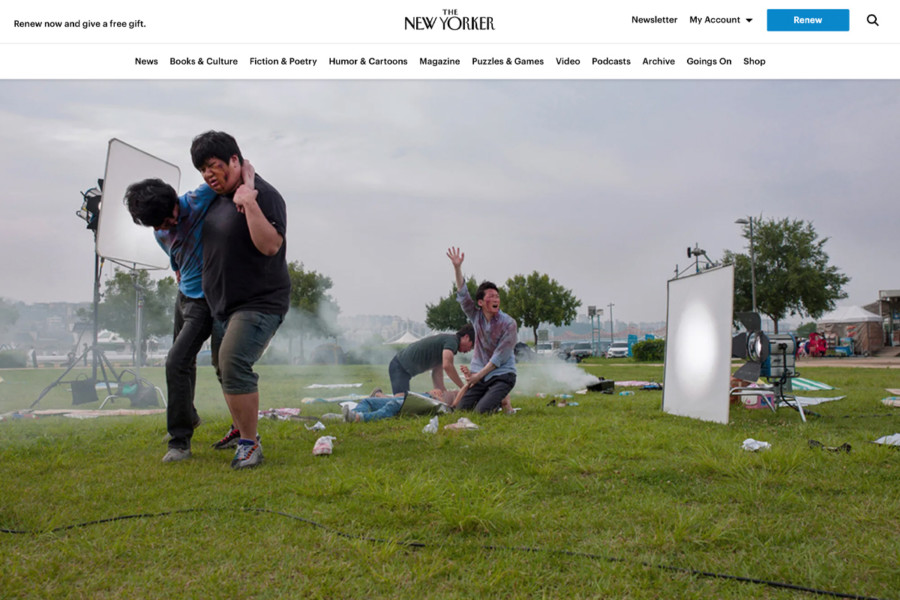Poor Choice: The New Yorker’s Drastic Measure
On August 6, 1945, the U.S. dropped the world’s first wartime nuclear bomb over Hiroshima and caused an estimated death toll of 77,000 people within four months due to injuries and radiation poisoning. On the ground however, photojournalist Yoshito Matsushige managed to remain unscathed despite living just 1.7 miles from ground zero; during 10 hours of taking photos he could only manage 7 photos!
Matsushige recounted his account of the bombing by recalling passing by a girls junior high school which had been directly exposed to heat rays: they were covered with large blisters on their backs, faces, shoulders and arms, many beginning to burst open as their skin hung loose like rugs.”
West end of Miyuki Bridge. After taking the photo on the left, this photograph was taken moving closer to the people. Both sides on Miyuki Bridge were covered with dead and injured people when this photograph was taken just after 11 a.m. Just in front of a police box on either end was full of both dead and injured individuals; these latter ones would then be transported via truck back to Ujina and Ninoshima Islands later that evening. Photo by Yoshito Mastushige.
Three days later, the United States dropped another nuclear bomb over Nagasaki and, the next day, Yosuke Yamahata, a military photographer, spent 12 hours documenting its devastation. His 100 photos serve as an unsettling and graphic reminder of nuclear warfare’s horrific aftermath.
Yamahata died of terminal duodenal cancer at 48. After retiring from his newspaper job, Matsushige spent the remainder of his life as a dedicated peace activist.
The New Yorker recently tweeted an archived story from Photo Booth’s 2019 series on South Korean photographer Anna Lim’s project Rehearsal of Anxiety; these staged photographs serve to depict what might happen after either an attack from North Korea or terrorist bomb attack with dirty bombs occurs.
